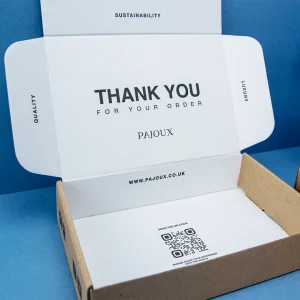Explore the consumer shopping trends shaping 2024 and 2025
The Rise of Sustainable and Ethical Shopping
In 2024, there was a significant rise in consumer demand for sustainable and ethical products. Shoppers are increasing prioritising eco-friendly packaging, fair trade goods, and products with lower carbon footprints. This trend is driven by a growing awareness of environmental issues and a desire to support brands that align with these values.
This shift is expected to continue into 2025, with more companies adopting sustainable practices to meet consumer expectations. Brands that fail to address these concerns may find themselves losing market share to more eco-conscious competitors.
Related: Fast Fashion’s Environmental Risks & Tips for Reducing Impact
Technology’s Role in Enhancing Consumer Experience
Technology has become a cornerstone in enhancing the consumer shopping experience. In 2024, innovations such as augmented reality (AR) and virtual reality (VR) allowed consumers to try products virtually before making a purchase. Additionally, AI-driven chatbots and personalized recommendations improved customer service and shopping convenience.
Looking ahead to 2025, we can expect further advancements in technology that will continue to transform the retail landscape. From more sophisticated AI algorithms to enhanced AR experiences, technology will play a crucial role in meeting the evolving needs of consumers.
The Shift Towards Personalised Shopping Experiences 
Personalisation has become a key aspect of the shopping experience. In 2024, retailers leveraged data analytics and machine learning to offer personalized product recommendations, tailored marketing messages, and customized shopping experiences. This approach not only enhances customer satisfaction but also increases sales and customer loyalty.
Our research suggests this trend will persist into 2025, with retailers focusing even more on creating unique and personalized experiences for each customer. By understanding individual preferences and behaviours, brands can build stronger relationships and deliver more value to their customers.
The Continued Growth of E-commerce and Omnichannel Retailing
E-commerce has seen exponential growth over the past few years, and 2024 was no exception. Consumers enjoy the convenience of shopping online and the ability to compare prices and products easily. Additionally, omnichannel retailing, which integrates online and offline channels, provides a seamless shopping experience.
The growth of e-commerce and omnichannel retailing will no doubt continue in 2025, with retailers investing in better online platforms, faster delivery options, and enhanced in-store experiences. This integrated approach ensures that consumers can shop how and when they want, whether it’s online, in-store, or a combination of both.
The Influence of Social Media on Consumer Behaviour
Social media has a profound influence on consumer behaviour, serving as both a marketing tool and a shopping platform. In 2024, platforms like Instagram, TikTok, and Facebook played a significant role in shaping trends and driving sales. Influencers and user-generated content have become powerful tools for brands to reach and engage with their target audience.
Its plain to see this influence will remain strong in 2025, with social media continuing to be a critical component of the consumer shopping journey. Brands will need to leverage social media more strategically, using it to build communities, engage with customers, and drive conversions.
Future Packaging Trends
As we move into 2025, packaging trends are set to evolve in response to changing consumer preferences and environmental concerns. One of the most significant trends is the shift towards sustainable packaging solutions. Consumers are increasingly demanding packaging that is not only recyclable but also made from biodegradable or compostable materials. This push for sustainability is driving companies to innovate and explore new materials that reduce environmental impact while maintaining product integrity.
In addition to sustainability, there is a growing emphasis on smart packaging technologies. These innovations include QR codes and NFC tags that provide consumers with detailed product information, enhance brand engagement, and offer interactive experiences. Smart packaging can also improve supply chain transparency, allowing consumers to trace the journey of their products from production to purchase.
Another trend gaining momentum is minimalistic and functional design. Consumers are drawn to packaging that is simple yet effective, with a focus on reducing excess materials and waste. This trend not only appeals to eco-conscious shoppers but also enhances the overall aesthetic appeal of products on the shelf.
Furthermore, personalized packaging is becoming increasingly popular as brands seek to create unique experiences for their customers. By incorporating elements such as custom designs, personalized messages, or limited-edition packaging, companies can foster a deeper connection with their audience and encourage brand loyalty.
Overall, the packaging trends of 2025 will be characterized by a blend of sustainability, technology, simplicity, and personalization, reflecting the evolving demands of modern consumers. Brands that adapt to these trends will be better positioned to meet consumer expectations and stand out in a competitive market.


